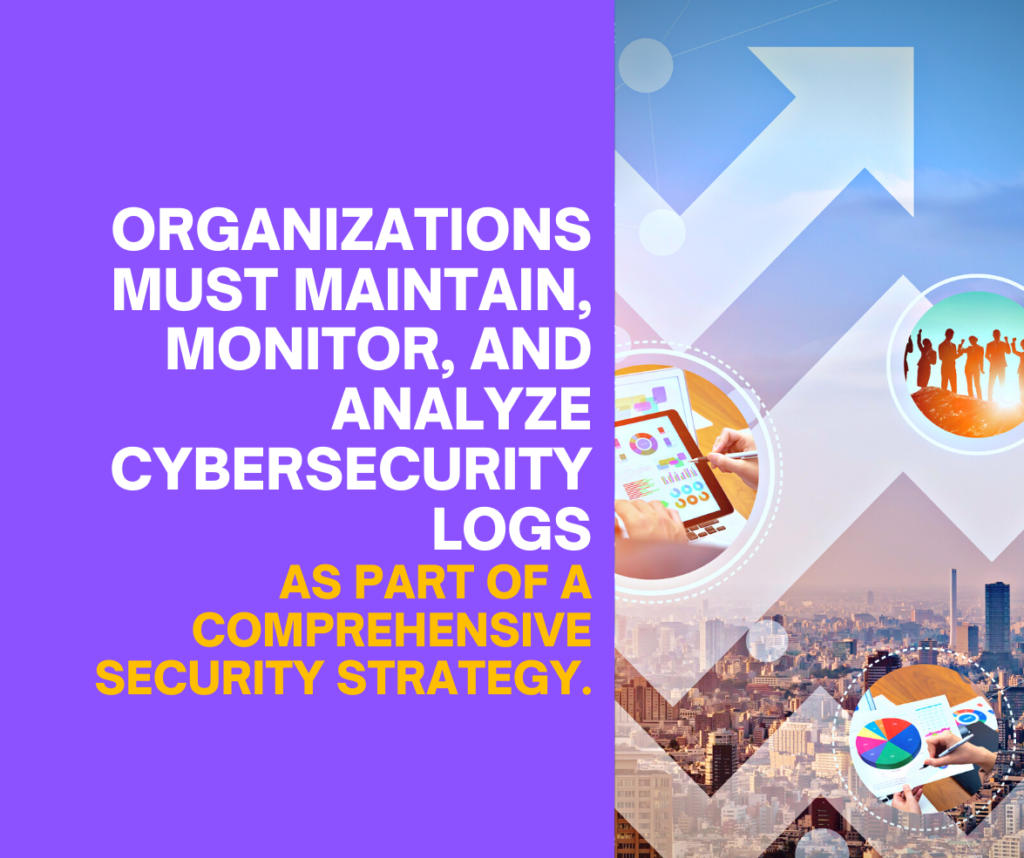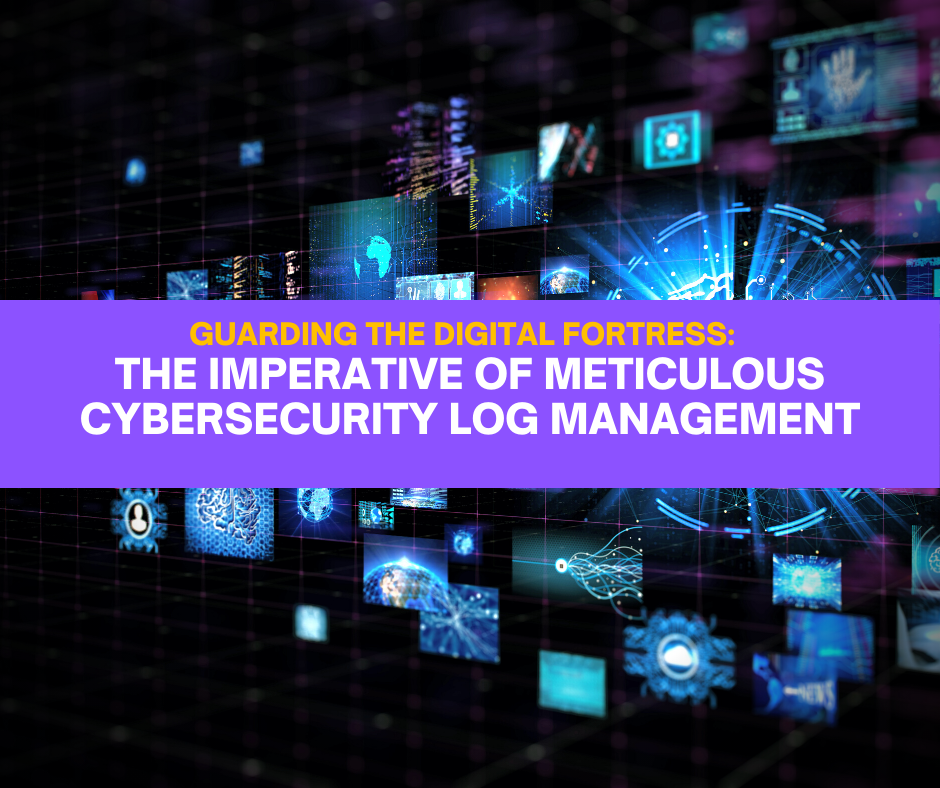When it comes to cybersecurity, complacency can spell disaster. Cyber threats are increasingly sophisticated, with attackers leveraging new technologies and strategies. According to a report by Cybersecurity Ventures, cybercrime is projected to cost the world $10.5 trillion annually by 2025, up from $3 trillion in 2015. It’s a staggering figure and a stark reminder that cybersecurity is not trivial.

Organizations must maintain, monitor, and analyze cybersecurity logs as part of a comprehensive security strategy. So, what is a cybersecurity log? Essentially, it records all activity within a system or network. This includes username, event source, timestamp, and specific operations performed. It’s the digital equivalent of a surveillance camera, capturing everything within the system.
There are several reasons why you should prioritize cybersecurity log management. First, audit logs can satisfy legal and regulatory requirements. Various industries and government bodies mandate specific log retention and review policies. Falling foul of these regulations can result in substantial penalties.
For example, the Health Insurance Portability and Accountability Act (HIPAA) stipulates that covered entities must retain logs for six years. Similarly, the Payment Card Industry Data Security Standard (PCI DSS) requires a one-year log retention policy. Compliance is non-negotiable, and logs provide the necessary documentation to demonstrate that your organization meets these standards.
Second, cybersecurity logs can support forensic investigations following a security incident. According to the 2020 Verizon Data Breach Investigations Report (DBIR), it takes an average of 207 days to identify a data breach. Cybersecurity logs can help to pinpoint the exact timeline of an attack, identifying the origin, the exploited vulnerabilities, and the compromised data. This is essential for remediation efforts and to prevent future incidents.
The third point is about communication. Raw data from logs is often too complex for non-technical stakeholders. But converting this data into comprehensible reports – using graphs, trend lines, and statistics – can help bridge the gap. These reports can demonstrate the effectiveness of your cybersecurity efforts, justify investment in new security solutions, and provide evidence for compliance audits.
Fourth, maintaining logs helps you develop and enforce best practices for network maintenance. It’s not enough to collect data. This information must be analyzed to inform your policies, procedures, and techniques. Consistent logging and analysis can help your organization identify patterns, predict potential vulnerabilities, and deploy effective preventive strategies.
Another crucial aspect of log management is anomaly detection.
A 2020 IBM report noted that over 25% of breaches were due to human error, often from overlooked log anomalies. Prioritizing and responding to unusual behavior within 90 days, considered the ‘hot’ period, can help mitigate potential damage. But logs aren’t just about defense. They are valuable resources that can improve system performance, help troubleshoot, and even guide the development of new features. A report from the SANS Institute states that nearly 40% of businesses use logs to improve system or network performance.
When discussing cybersecurity logs, we cannot ignore the issue of storage. The sheer volume of data generated can be overwhelming. A mid-sized organization can easily create terabytes of log data annually. Thus, ensuring ample storage and managing this data effectively is just as crucial as logging.
The meticulous monitoring, maintaining, and analyzing of cybersecurity logs is not just a ‘nice-to-have’; it’s an essential part of any robust cybersecurity strategy. Despite this, many organizations still underutilize logs, leaving them vulnerable to breaches and attacks.
The evolving digital landscape, with businesses increasingly shifting operations to the cloud, makes the need for effective log management more pressing than ever. We cannot overstate the urgency of this matter. Inaction today could lead to costly consequences tomorrow.
According to the IBM Cost of a Data Breach Report 2022, the average data breach cost is a staggering $4.24 million, the highest in 17 years. By adopting an effective cybersecurity log monitoring strategy today, you’ll be better positioned to prevent such costly breaches in the future.
Incorporating best practices recommended by authoritative bodies like the Center for Internet Security (CIS) can be invaluable in managing cybersecurity logs. The CIS offers a set of 20 critical security controls that provide a roadmap for improving your organization’s cybersecurity posture. Several of these controls pertain directly to the importance of cybersecurity log management.
For instance, CIS Control 6 underscores the need to maintain, monitor, and analyze audit logs. It recommends that organizations collect, manage, and analyze audit logs of events that could help detect, understand, or recover from an attack. Implementing this control will help organizations take a proactive stance toward their cybersecurity by actively looking for signs of an attack in their logs instead of merely using them as a reactive tool after an incident.
Moreover, CIS Control 12 emphasizes the importance of boundary defense. This includes monitoring and controlling all data across network borders and regularly scanning for unauthorized connections. Proper cybersecurity log management can assist in meeting these goals by providing a record of all network connections and activities.
CIS Control 16 highlights the significance of incident response and management. Cybersecurity logs play a crucial role here by providing a detailed account of security incidents, facilitating effective incident response, and post-incident analysis.
Investing in the right CIS Control tools can significantly simplify the log management process and help you adhere to these controls. Numerous tools available in the market automatically collect, store, and analyze log data, identify anomalies, and even offer real-time alerts for potential security incidents.
CIS Control is critical in any organization’s cybersecurity toolkit. It provides clear, actionable steps to defend against malware threats and mitigate their potential impact. Implementing this control contributes to the safety and resilience of an organization’s digital assets, reinforcing its defensive stance in the face of ever-evolving cyber threats.
As we’ve discussed, cybersecurity logs are not just about compliance. They offer a wealth of information that can be harnessed to strengthen your cybersecurity defenses. The need for meticulous log management is immediate and critical.
Let’s rise to this challenge by employing best practices, adopting practical tools, and promoting a culture of proactive cybersecurity within our organizations.

